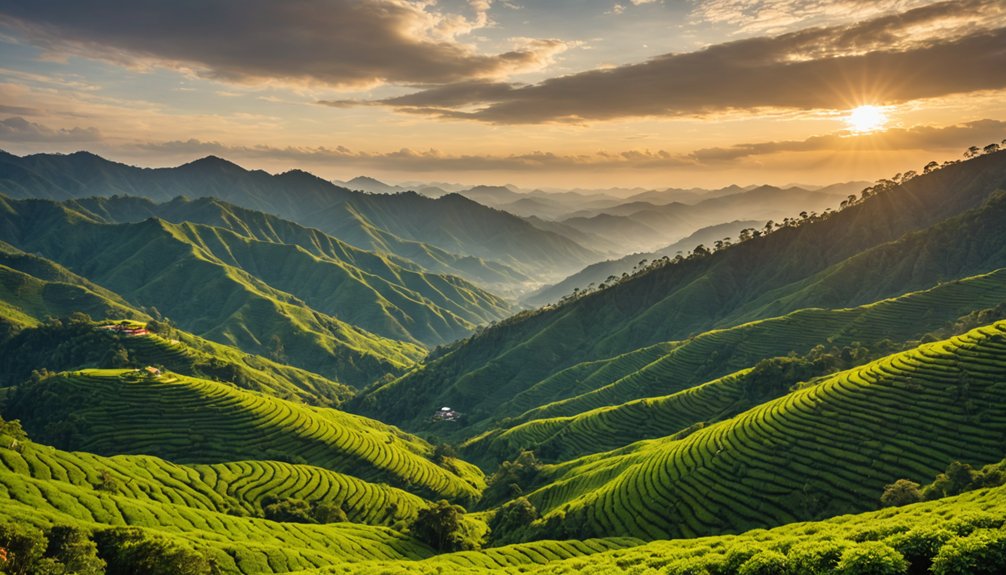Malaysia’s ideal visiting time varies by region due to its dual monsoon seasons. You’ll find the west coast (including Penang and Langkawi) most pleasant from December to February, with minimal rainfall and comfortable temperatures around 86°F. The east coast shines from June to August, perfect for island hopping and beach activities. Year-round, you can expect tropical warmth, but timing your visit to match your preferred coast’s dry season allows Malaysia’s full potential to be realized.
Key Takeaways
- December to February offers ideal conditions for west coast destinations with minimal rainfall and comfortable temperatures.
- June to August is perfect for east coast travel, featuring clear skies and calm seas for island activities.
- March to May provides balanced weather nationwide with fewer tourists and lower accommodation rates.
- Avoid the east coast during November to February due to heavy monsoon rains and potential flooding.
- Year-round shopping and city experiences are best in Kuala Lumpur, with peak retail sales from December to February.
Weather Overview & Seasonal Patterns
Nearly every visitor to Malaysia encounters its defining tropical climate, characterized by year-round warmth and high humidity levels exceeding 80%. You’ll experience consistent temperatures in coastal and lowland areas, ranging from 73°F to 91°F, while microclimates in highlands offer invigorating relief with temperatures between 57°F and 77°F.
Malaysia’s weather patterns are dominated by two major monsoon seasons. The Northeast Monsoon (November-March) brings heavy rainfall intensity to the east coast, while the Southwest Monsoon (May-September) affects western regions with briefer afternoon showers. Popular destinations like Langkawi and Penang experience their best weather from November to March. You’ll find inter-monsoon periods in March-April and October-November, marked by increased thunderstorm activity.
The country’s diverse geography creates distinct regional patterns, with eastern Peninsular Malaysia receiving considerably more rainfall (2,500-3,000mm annually) than the western regions (<2,000mm). This variation heavily influences travel possibilities, particularly regarding island accessibility and outdoor activities throughout the year.
Regional Climate Breakdown
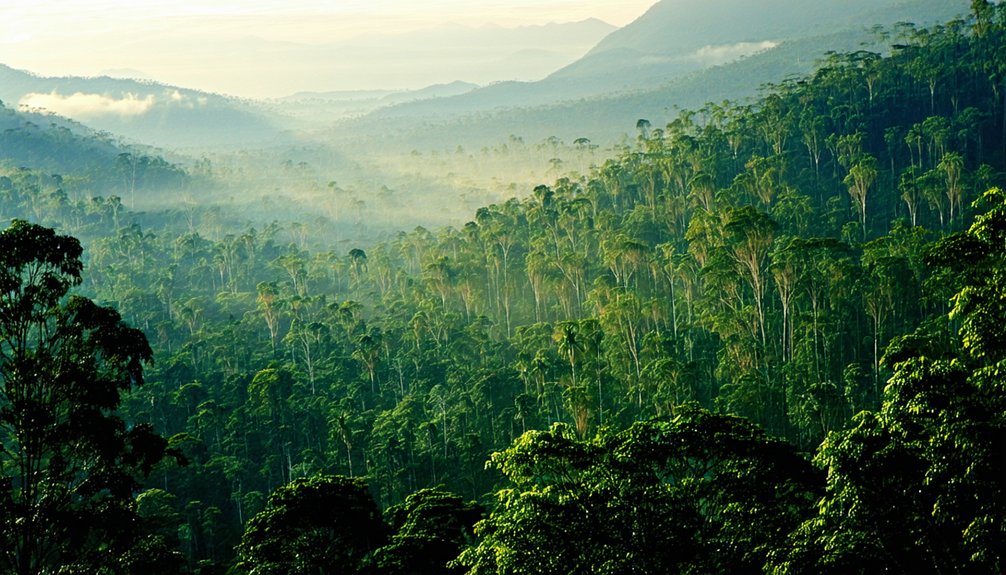
Malaysia’s distinct coastal regions experience markedly different weather patterns, with the east coast receiving its heaviest rainfall from November to February while the west coast sees peak precipitation between April and October. You’ll find the east coast islands largely closed during the monsoon season, though this timing creates perfect conditions for west coast destinations like Langkawi and Penang. Over in East Malaysia (Borneo), the states of Sabah and Sarawak follow their own climate rhythm, with October to March bringing significant rainfall and the remaining months offering more stable conditions for exploration. Recent studies show Sabah and Sarawak are experiencing larger rainfall increases compared to Peninsular Malaysia, which may affect travel planning in these regions.
East Coast Weather Patterns
While the east coast of Malaysia enjoys a tropical climate year-round, you’ll experience distinct weather patterns that shape the region’s character. The northeast monsoon brings heavy rainfall from November to February, leading to monsoon-driven boat disruptions and increased coastal erosion risks. The sea maintains comfortable temperatures 27-30°C throughout all seasons.
You’ll encounter three key seasonal phases:
- Peak monsoon (Nov-Dec): Intense rainfall averaging 433mm monthly with 21 rainy days
- Dry season (Feb-Mar): Minimal rainfall around 115mm with just 9 rainy days
- Interim period (Mar-Apr, Oct-Nov): Variable weather with afternoon storms
Daytime temperatures remain consistent between 28-32°C, while nights cool to 23-24°C. The region’s high humidity, typically exceeding 80%, creates a distinctly tropical atmosphere that defines the east coast experience.
West Coast Seasonal Changes
The west coast of Malaysia presents a distinctly different climate story from its eastern counterpart. You’ll experience west coast monsoon impacts from May through September, bringing afternoon showers that rarely disrupt your daily plans. Coastal microclimate variations create unique conditions across popular destinations like Penang and Langkawi. The December to February period offers drier weather conditions as the northeast monsoon primarily affects the eastern regions.
| Location | Peak Season | Average Temp |
|---|---|---|
| Langkawi | Dec-Feb | 75-90°F |
| Penang | Dec-Feb | 75-90°F |
| Pangkor | Year-round | 77-88°F |
| Malacca | Dec-Mar | 86°F |
| KL | Dec-Feb | 78-92°F |
Your best window for visiting is during the dry season (November-March), when you’ll enjoy minimal rainfall and ideal conditions for both beach activities and cultural festivals. The shoulder seasons offer advantages too, with April-May bringing fewer crowds while maintaining comfortable temperatures for exploration.
Borneo’s Unique Climate Zones
Four distinct climate zones characterize Borneo’s diverse landscape, from its scorching lowlands to its chilly mountain peaks. You’ll experience microclimates in protected areas that range from hot and dry regions with less than 2,000mm of rainfall to extremely wet zones receiving over 4,000mm annually.
The influence of elevation on temperatures creates dramatic variations across the island:
- Coastal areas like Kuching maintain 25-32°C with high humidity and frequent rainfall
- Central highlands offer a cooler 23-28°C with morning fog and moderate precipitation
- Mount Kinabalu’s summit plunges to 0-10°C, creating a unique alpine environment
Sabah’s southern rainforests provide year-round stability with minimal temperature fluctuations, while Kota Kinabalu enjoys shelter from typhoons due to its equatorial position. Each zone offers distinct opportunities for exploration throughout the year. The coastal city of Kuching experiences 247 rainy days annually, making it one of Borneo’s wettest regions.
Peak & Off-Peak Travel Months
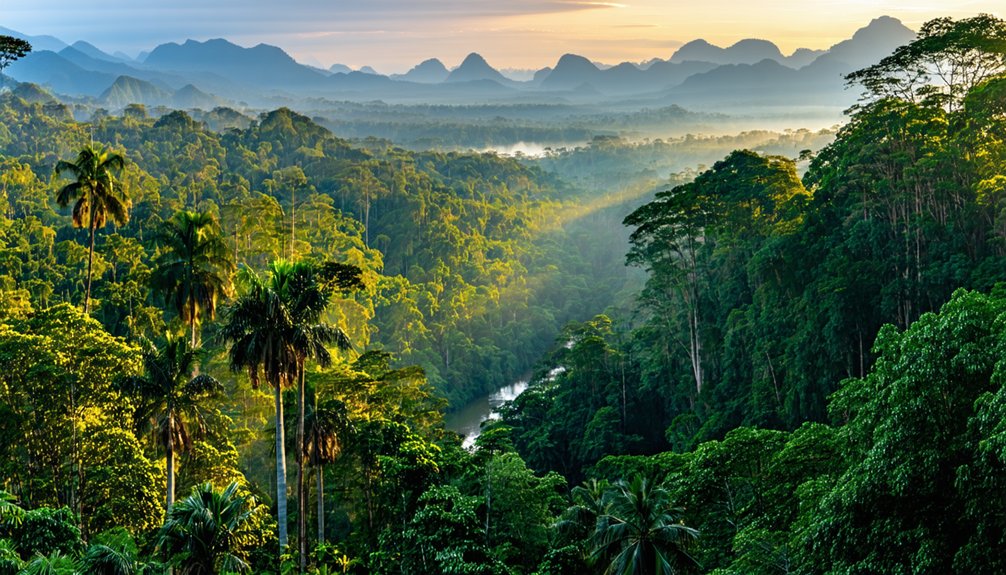
Malaysia’s peak tourist seasons align closely with its regional weather patterns, with the west coast drawing crowds from December to February while the east coast bustles from June to August. You’ll find markedly lower rates and fewer tourists during the intermediary months of March to May, though you’ll need to prepare for occasional rainfall across both coasts. The sweet spot for balanced weather and moderate crowds falls in the shoulder seasons of early June and late September, offering you a chance to explore popular destinations without peak-season premiums. Visitor data from 2023 shows 2.32 million visitors flocked to Malaysia in December alone, marking it as the country’s most popular month for international tourism.
High-Season Tourism Periods
Understanding Malaysia’s peak tourist seasons requires familiarity with the country’s distinct regional patterns, as visiting periods differ markedly between the peninsular coasts and Borneo.
You’ll find these primary high-season periods across Malaysia:
- West Coast destinations (including Langkawi and Penang) peak during December-February, when you’ll encounter holiday travel demands and drier weather
- East Coast locations experience their busiest months from March to October, offering ideal conditions outside the monsoon season
- Malaysian Borneo welcomes most visitors between May and September, perfect for wildlife adventures
The Cameron Highlands maintain steady tourism year-round, with slight peaks during June-August. For shoulder season deals, consider visiting coastal regions during transitional/intermediate months, when you’ll find fewer crowds but still enjoy relatively favorable weather conditions. Retail therapy enthusiasts will find excellent shopping opportunities in Kuala Lumpur during the year-end sales of the December-February period.
Low-Season Travel Benefits
While many travelers shy away from Malaysia’s low season, savvy visitors can enjoy significant advantages during the quieter months of March-May and September-November. You’ll find budget-friendly deals with hotel rates slashed up to 30%, and luxury accommodations become surprisingly accessible at mid-range prices.
The reduced crowds create an entirely different experience at major attractions. You’ll encounter 40-60% fewer visitors at iconic sites like the Petronas Towers, and UNESCO heritage sites in George Town and Melaka offer unobstructed photo opportunities. Better negotiation opportunities emerge at street markets, and you won’t face long queues at popular restaurants. Though brief rainfall occurs, most showers don’t last all day, allowing flexible exploration. Indoor attractions like museums and malls provide climate-controlled alternatives during wet afternoons. The East coast monsoon brings heavier rainfall from November to February, making this period ideal for exploring the country’s western regions.
Shoulder Season Sweet Spots
Beyond the standard high and low seasons, the sweet spots for visiting Malaysia fall within two distinct shoulder periods: March-May and September-October. During these changeover months, you’ll find ideal conditions with fewer crowds and better accommodation options while transportation logistics remain smooth and reliable.
These shoulder periods offer distinct advantages:
- March-May brings manageable temperatures of 22-32°C in lowlands, with sporadic showers that won’t disrupt your travels
- September-October sees reduced visitor numbers on the east coast, with resorts offering 10-30% discounts
- Both periods feature enhanced wildlife viewing opportunities, particularly in Taman Negara and Borneo’s Kinabatangan wetlands
The Cameron Highlands provide a refreshing escape with distinctly cooler temperatures during these shoulder months. You’ll experience Malaysia’s cultural richness and natural wonders while avoiding peak-season crowds and enjoying more competitive rates across accommodations and activities.
Cultural Events & Festival Calendar
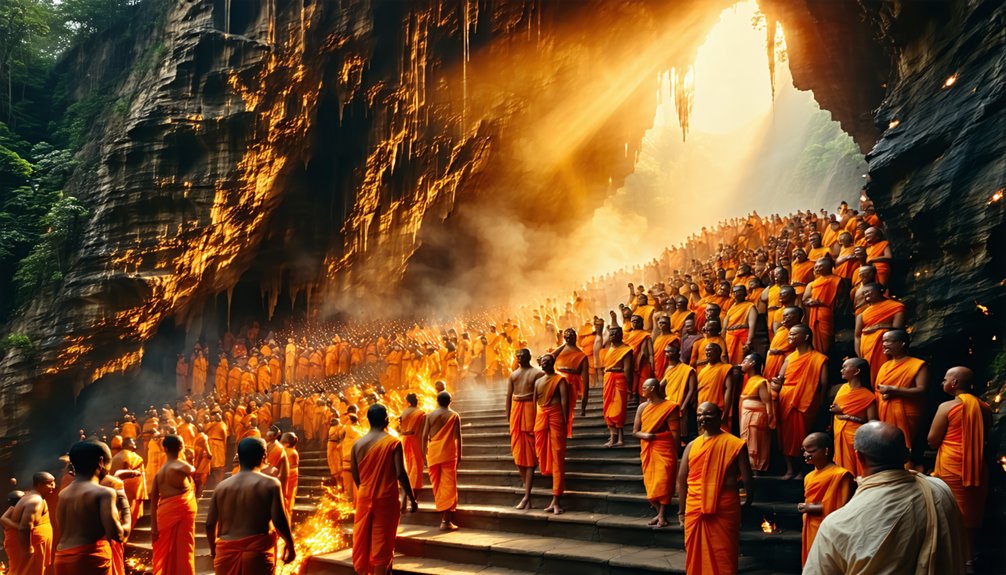
Malaysia’s vibrant cultural tapestry comes alive through dozens of festivals and celebrations throughout the year, making festival timing a pivotal factor in travel planning. You’ll discover a rich calendar of events showcasing the country’s diverse heritage, from religious observances to culinary extravaganzas. Visitors can experience Malaysia’s unity in diversity as locals warmly welcome everyone to participate in their cultural celebrations.
| Festival Type | Key Events & Dates |
|---|---|
| Religious | Chinese New Year (Jan 29), Thaipusam (Jan 24-28) |
| Cultural | Colours of Malaysia (May-Jun), UNESCO Day (Jul 7) |
| Culinary | Mooncake Festival (Oct 6), Food Festivals (Year-round) |
| Regional | Gawai Dayak (Jun 1-2), Rainforest Music Fest (Jun 20-22) |
For arts & cultural attractions, you’ll find peak experiences during the Colours of Malaysia festival, while food & culinary experiences reach their zenith during the Mid-Autumn festivities. Major celebrations like Hari Raya Aidilfitri (Mar 31-Apr 1) transform cities into vibrant cultural showcases, offering unique insights into Malaysian traditions.
Outdoor Activities & Timing Guide
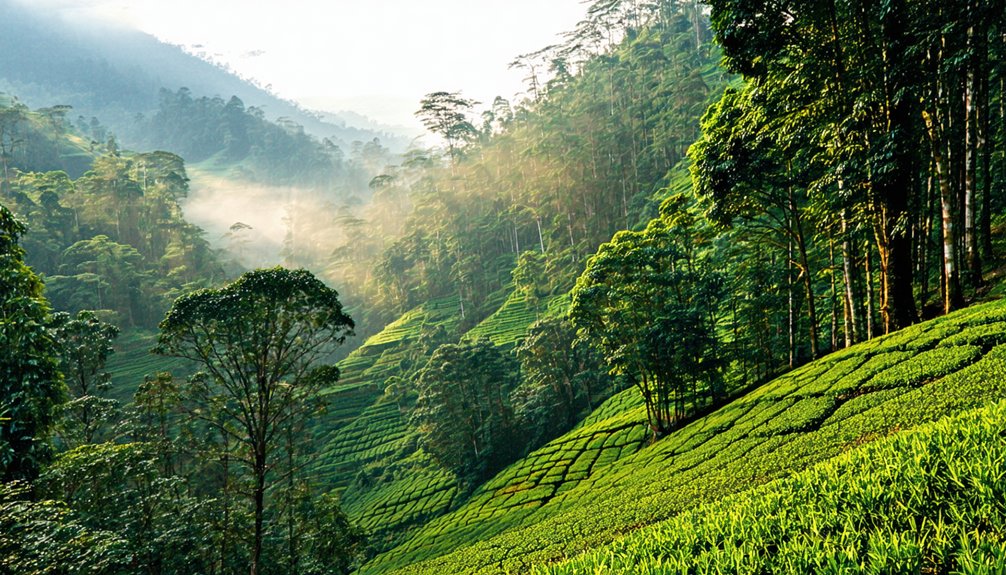
Every outdoor enthusiast will find their perfect season in Malaysia’s diverse landscape, where activity windows align closely with regional weather patterns. For adventure seeker tips, you’ll want to target March-April for ideal ATV off-roading, skydiving, and white-water rafting conditions when rainfall is minimal. Be mindful that strong monsoon winds can significantly impact coastal activities during certain seasons.
Nature lover strategies should focus on these key seasonal windows:
- April-September: Prime time for Borneo explorations, including Mulu Cave spelunking and orangutan spotting in Sabah/Sarawak
- May-September: East coast island hopping with calm seas perfect for kayaking and snorkeling around Perhentian and Tioman
- March-July: Taman Negara’s rainforest adventures, featuring canopy walks with 80% dry days
For mountain enthusiasts, book Mount Kinabalu permits three months ahead for April climbs, while year-round access to Cameron Highlands’ trails offers a consistent 18°C escape for trekking adventures.
Planning Tips & Travel Essentials
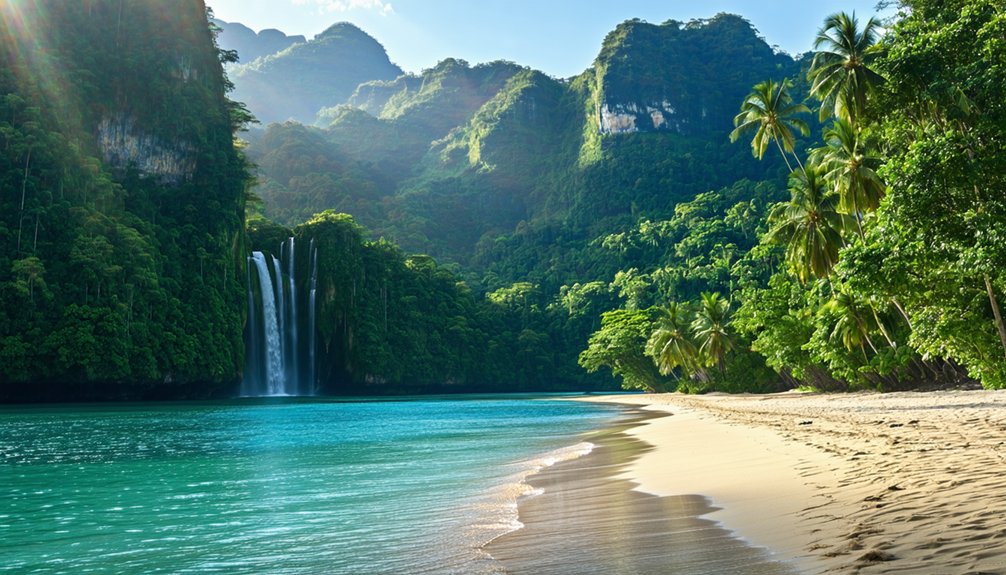
While planning your Malaysian adventure requires careful consideration of seasonal variations, a few essential preparations can make your journey smoother and more enjoyable. Before departure, guarantee you’ve checked visa requirements and arranged reliable transportation options through trusted platforms like Grab or Bookaway. Consider joining a guided tour at Taman Negara Park for an authentic wilderness experience.
| Essential | Urban Areas | Rural Regions |
|---|---|---|
| Transport | Grab, MRT, buses | Car rental, boats |
| Safety | Official taxis, well-lit areas | Daylight travel only |
| Attire | Smart casual, modest dress | Conservative, weather-appropriate |
| Navigation | Mobile apps, city maps | Local guides, offline maps |
You’ll want to pack modest clothing for religious sites and arrange transportation in advance, particularly during peak seasons. Consider downloading essential apps like Grab for urban mobility and securing an International Driving Permit if you plan to rent a car. Remember to factor in regional weather patterns when scheduling activities, and keep emergency contacts handy for peace of mind.

